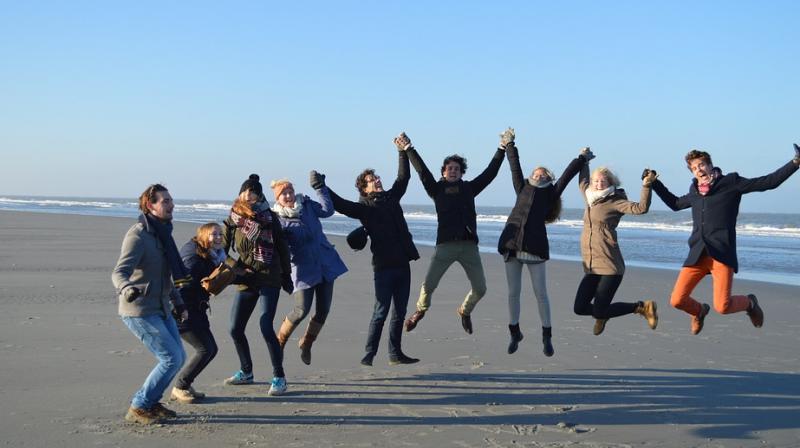College friends shape individuals social behaviour: study

Washington: Friendships at college should not be underestimated, as they can either help or hinder students academically and socially, states a new study.
The article by Janice McCabe served as a precursor to her upcoming book, "Connecting in College: How Friendship Networks Matter for Academics and Social Success".
Previous studies on the importance of peers have examined the broader role that peers play in student life, often focusing on their social influence, whereas, this study examines: individualfriendships a college, how students benefit academically and socially from such networks, and how such networks reflect a student's race and class.
The research analyzed and visually mapped the friendship networks of 67 students at a Midwestern university that is predominantly white, by looking at the role that friendship groups play in a student's life and the density of ties that he/she shares with friends.
McCabe finds that student friendships can be classified into three types of networks: tight-knitters, samplers and compartmentalizers.
Tight-knitters have one dense group of friends, where nearly everyone knows each other, and their network resembles a ball of yarn.
Most of the tight-knitters were students of color (Black or Latino). Tight-knitters referred to their friends as family and relied on each other socially.
Academically, their friends could also be supportive and helpful. However, they also had the potential to pull each other down academically, if they lacked academic skills and motivation. The potential for such negative influence reproduced race- and class-based inequalities.
Compartmentalizers have two to four clusters of friends, who do not know each other, and their network resembles a bow tie.
Compartmentalizers had separate clusters of friends: one or more for studying and one or more for having fun, with a good balance between the two.
They tended to be white and from the middle class, and relied less on their friends to succeed in college than tight-knitters.
In addition to having academic and social clusters of friends, Blackand Latino compartmentalizers also had a cluster of friends that helped them with race- or class-based marginality.
Samplers have one-on-one friendships rather than groups of friends, with friends from different places remaining unconnected to each other, and their network resembles a daisy.
Samplers were independent and did not rely on their friends for a sense of belonging; they were often socially isolated. They were academically successful without the help of their friends. Samplers came from a range of race and class backgrounds.
"Contrary to conventional wisdom, students are quite savvy in recognizing that friends can distract them and in strategically using friends to help them improve their academics. The most successful strategies, however, differ by network type," said McCabe.
For the most part, the type of friendship networks that students had during college remained their type after college.
Tight-knitters remained tight-knitters and compartmentalizers remained compartmentalizers. However, most samplers became tight-knitters after they graduated and felt more supported.
College friendships that offered both strong academic and social ties proved to be the most enduring. Tight-knitters maintained nearly one-third of their friendships from college while compartmentalizers and samplers retained about a quarter of their friendships from college
The study 'Friends with Academic Benefits', was published in the current issue of Contexts.

